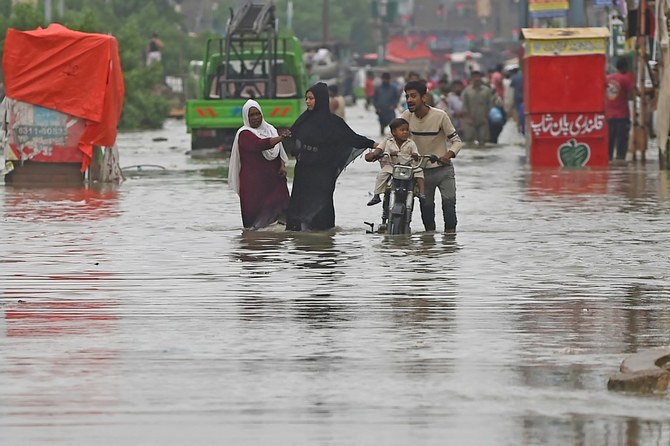- The Pakistan Meteorological Department (PMD) has issued an alert warning of heavy rainfalls across the country from April 27 to May 3, which could result in flooding in some areas of Balochistan, Punjab, and Sindh. Heavy rainstorm has caused serious situations throughout Pakistan in recent years, leaving many people struggling to cope with the impacts of climate change.
Pakistan is a country that has experienced some of the most extreme weather in the world, with severe rainfalls and floods causing significant damage to the infrastructure and economy of the country.

Heavy Rainfall in different areas of Pakistan
Recently, the country has been hit by a series of heavy rainfalls, leading to devastating floods that have caused loss of life and property. In this article, we will take a comprehensive overview of heavy rain in Pakistan, examining the latest weather patterns and the effects of climate change on human lives.
Understanding the Latest Weather Patterns in Pakistan
A fresh westerly wave is expected to enter southern Balochistan from April 28, which will cause heavy rainfalls across the region. The rains are expected to continue until May 3, with occasional gaps in between.
Pakistan has been experiencing increasingly unpredictable weather patterns in recent years, with heavy rainfall being frequent. The country has seen some of the most extreme weather conditions, such as heavy rains and floods. These situations caused significant damage to the country’s infrastructure and economy. In 2020, Pakistan witnessed its second-longest spell of heavy rains in the last 30 years, leading to widespread damage and disruption.
Climate Change Impact on Heavy Rainfall in Pakistan
The PMD has identified several districts at risk of flooding due to heavy rainfall. It includes Qambar Shahdadkot, Dadu, Mirpurkhas, Umerkot, Sanghar, Matiari, and Badin. The authorities advise people living in these areas to take necessary precautions and stay alert.
Greenhouse gas emissions are causing the planet to warm, which is believed to be responsible for the recent weather patterns in Pakistan. The warming of the earth causes the atmosphere to hold more moisture. It will lead to heavier rainfalls and more extreme weather patterns. Pakistan is experiencing more frequent and intense rain, which will cause climate change.
Effects of Heavy Rainfall on People’s Lives
Contrary to rumors circulating on social media, the PMD has dismissed the possibility of urban flooding in Karachi during the forecast period. However, the city may experience occasional rainfall, which could help reduce the ongoing heatwave.
Heavy rainfall has an impact on the lives of people in Pakistan, such as on the infrastructure and economy of the country. Heavy rainstorms have caused floods that have displaced thousands of people.

Pakistan’s monsoon season due to climate change affects people’s lives
The floods have also caused extensive damage to homes and businesses, leading to economic losses. Rural areas are more vulnerable to the impacts of climate change, with floods washing away roads, bridges, and other vital infrastructure. That situation makes it difficult for people to access services and resources.
From April 26 to April 29, the forecast predicts rainfall in Punjab, Islamabad, Khyber Pakhtunkhwa, Gilgit-Baltistan, and Kashmir. It may lead to flash floods in certain regions. The PMD has identified several hilly regions. They are at risk of flooding and landslides during this period.
Pakistan’s Response to Heavy Rainfall
The Pakistani government has implemented several measures to protect people and infrastructure in response to the increasing frequency of heavy rainfalls. One of the crucial measures is the construction of dams. This can help contain floodwaters and reduce the risk of damage.

The government is also investing in early warning systems. This will alert people to potential flood risks and provide vital information to prepare for extreme weather events. Authorities are developing disaster management plans. They are also conducting training sessions to minimize the impacts of floods and other extreme weather events.
Conclusion
The PMD alerts people about heavy rainfalls across Pakistan from April 27 to May 3. People should take this seriously, especially those who live in a low-lying or hilly region. By staying informed and taking necessary precautions, you can stay safe during this long spell of torrential rains.
Heavy rainfall has become an increasingly frequent occurrence in Pakistan. It has devastating effects on lives, infrastructure, and the economy.
Climate change is a significant contributor to the latest weather patterns in Pakistan. It leads to more frequent and intense rainfalls. The Pakistani government is implementing measures to protect people and infrastructure. This needs to take action to address the impacts of climate change and prepare for future extreme weather events.






Share this: